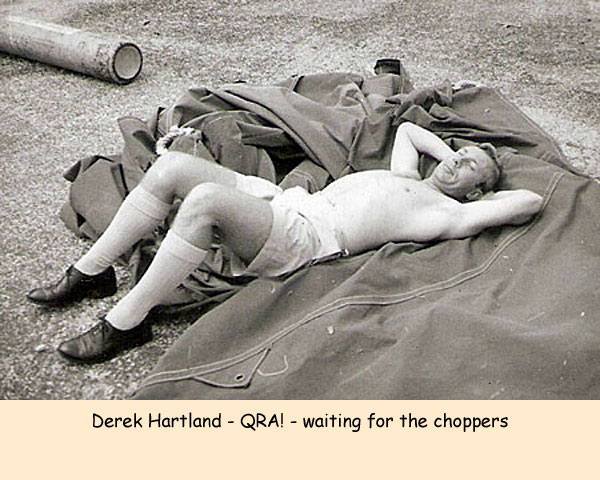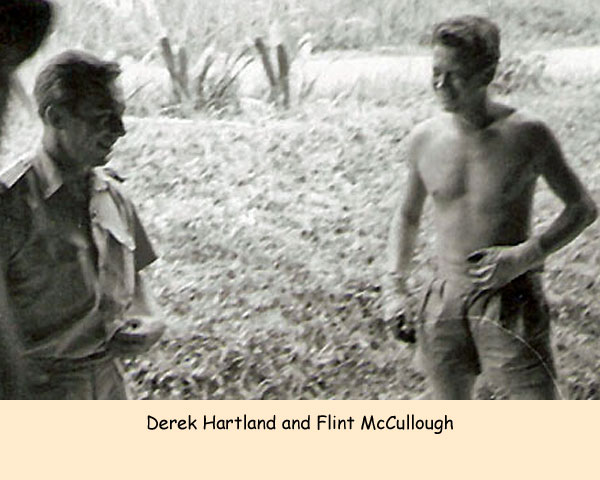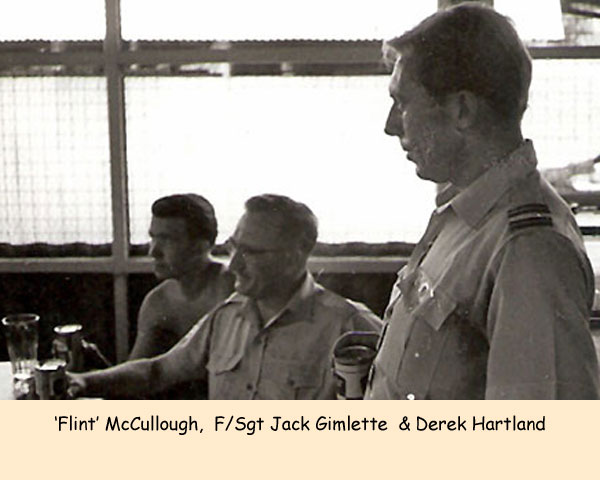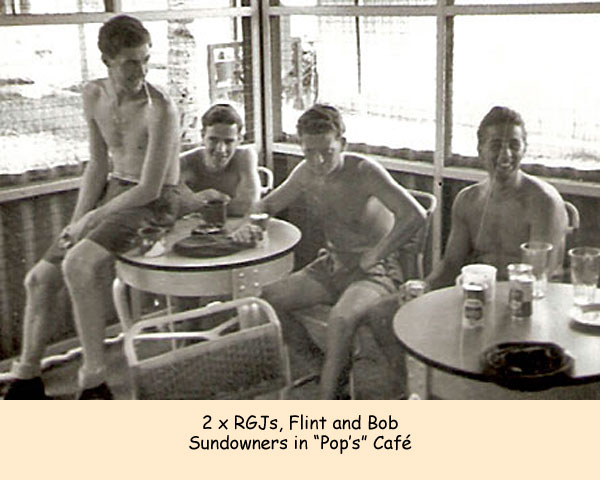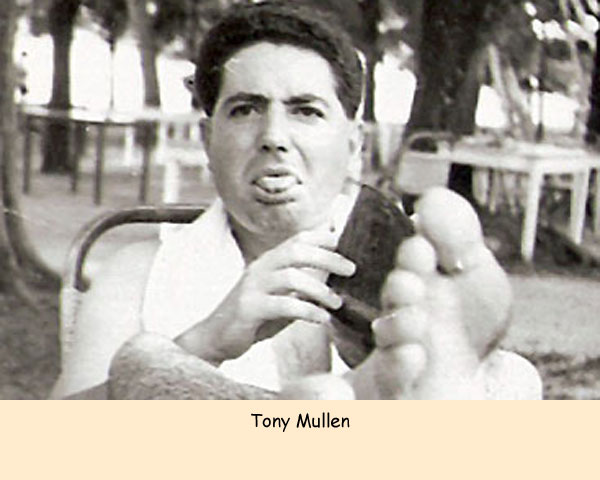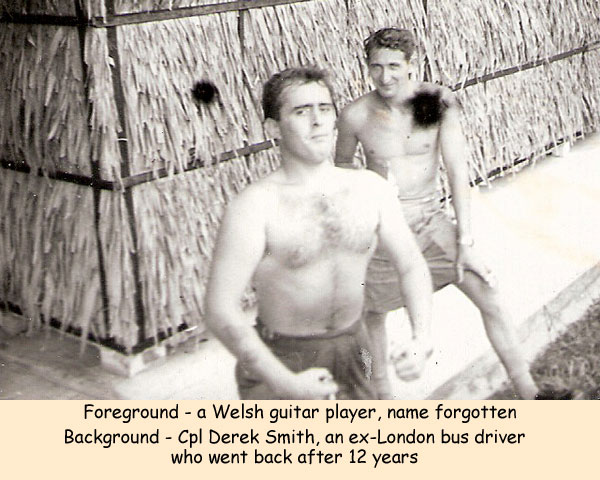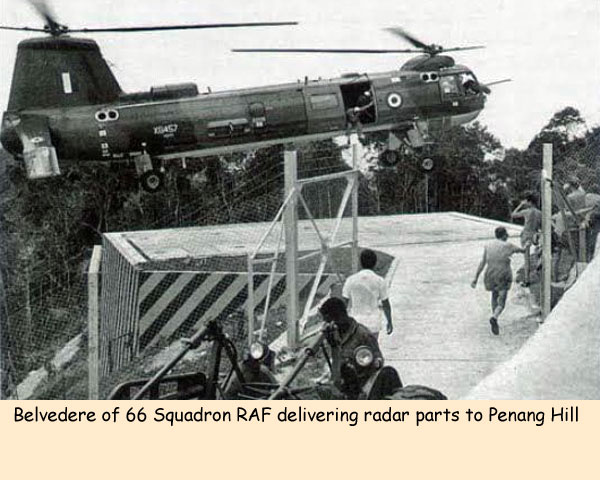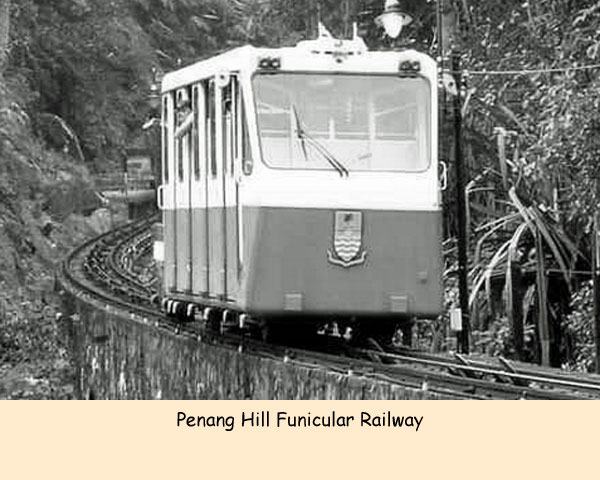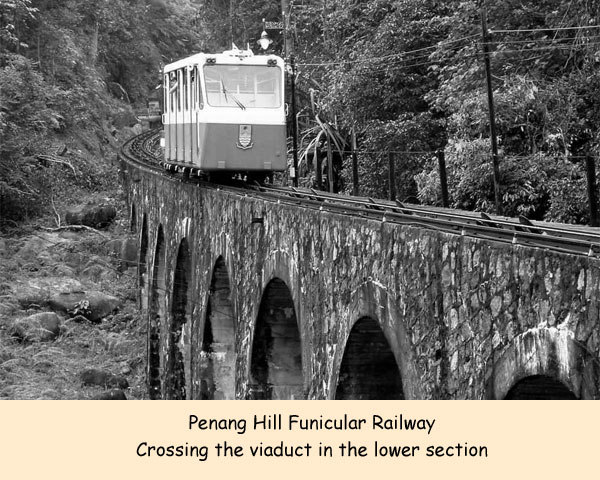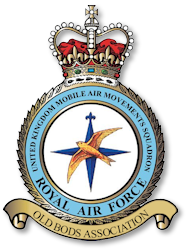

In 1964 I was posted to FEAFMAMS. Soon after arriving at Seletar, I was detached to FEAFOC (Far East Air Force Operations Centre) for a 3 month stint as the tame Movs tasker. All tasks for any airlift requirement came in to the centre for resolution and air transport tasks often involved MAMS personnel, hence our presence in the centre team.
In early December 1964 a task was quickly passed by the operators to me for resolution. It involved building a radar station on top of a hill in Penang, off the north western coast of Malaysia. I glanced at it, laughed and put it in the pending tray. It was at the height of the Indonesian insurgency and we were very busy, so that was my excuse for not looking at it again until a quiet period the following weekend.
In early December 1964 a task was quickly passed by the operators to me for resolution. It involved building a radar station on top of a hill in Penang, off the north western coast of Malaysia. I glanced at it, laughed and put it in the pending tray. It was at the height of the Indonesian insurgency and we were very busy, so that was my excuse for not looking at it again until a quiet period the following weekend.
The Royal Engineers and MPBW (Ministry of Public Buildings and Works) needed to get approximately 3800 tons of building equipment and a complete TPS34 Radar station to the top of Penang Hill. There was no road access, so they thought that a helicopter lift was the answer. In those days an average lift was less than 3000lbs, hence the hollow laugh which the operators had given this task..
I found out from the local area maps that there was a funicular railway from the foot of the hill to a point about 3 miles short of the top. Additionally there was a tarmac road, although very narrow and windy, linking the top station to the top of the hill. Perhaps a surface Movs task was a possibility.
I found out from the local area maps that there was a funicular railway from the foot of the hill to a point about 3 miles short of the top. Additionally there was a tarmac road, although very narrow and windy, linking the top station to the top of the hill. Perhaps a surface Movs task was a possibility.
On the Monday I went to see Mov 1, Sqn Ldr Ray Smith, later to be DDMov1 (RAF), who was very doubtful but agreed to an on-site recce. Together with Supply2, Sqn Ldr Alf Beale, later to become D Mov(RAF), I went up to RAAF Butterworth on the RNZAF shuttle from Changi and then over to the island of Penang. What a magnificent place it was then.
We went to see the very large and intimidating Sikh manager of the Penang Hill Railway who was very co-operative and took us up the hill to see the terrain. Having walked the site for the project, we got permission from the state government to go ahead and from the railway authorities to undertake ‘minor’ mods to one of their trains.
We went to see the very large and intimidating Sikh manager of the Penang Hill Railway who was very co-operative and took us up the hill to see the terrain. Having walked the site for the project, we got permission from the state government to go ahead and from the railway authorities to undertake ‘minor’ mods to one of their trains.
Back in Changi, agreement was sought and given for contracts to be let and I chose an operation nickname from the authorised list - it just happened that ‘hill climb’ was available! OC FEAFMAMS agreed that I could nominally be appointed the project planning officer and someone else was detached to the FEFOC desk.
Over the next 6 months the detailed plans were completed and on 7 October 1965, a MAMS team left on detachment to Penang, comprising Derek Hartland, Derek Smith, Bob Turner, Rab Devlin, Flint McCullough, Bill Holder and myself. Over the next 12 months or so, we became the first and perhaps the only ever funicular qualified movers and, judging by the large number of high ranked visitors, an oddity which would not have been misplaced in the local zoo rather than comprising a detached military unit!
Over the next 6 months the detailed plans were completed and on 7 October 1965, a MAMS team left on detachment to Penang, comprising Derek Hartland, Derek Smith, Bob Turner, Rab Devlin, Flint McCullough, Bill Holder and myself. Over the next 12 months or so, we became the first and perhaps the only ever funicular qualified movers and, judging by the large number of high ranked visitors, an oddity which would not have been misplaced in the local zoo rather than comprising a detached military unit!
After getting our basic kit up to Penang, by air and train, we set up our detachment HQ with the locally based 3rd Royal Green Jackets at Minden Barracks on the island.
We had been authorised to task 8 Sqn RAAF, Hueys based at Butterworth, direct, bypassing FEFOC and thus were able to get up to the top of the hill to assess the requirements for moving items from the railway to site. We got agreement that our first task was to move the materials necessary for the engineers to build a proper hard helipad, as every time it rained our grass/mud pad went black for hours/days except in emergency. We also had to modify the funicular luggage wagon, which was attached to the front of the passenger carriage, to take our vehicles up to the top. This was made no easier by having to transfer from one train to another half way up, because each half was on a separate cable track! Additionally we could only start work after the last public train of the day had departed, because of insurance problems, which was 21.30hrs!
We had been authorised to task 8 Sqn RAAF, Hueys based at Butterworth, direct, bypassing FEFOC and thus were able to get up to the top of the hill to assess the requirements for moving items from the railway to site. We got agreement that our first task was to move the materials necessary for the engineers to build a proper hard helipad, as every time it rained our grass/mud pad went black for hours/days except in emergency. We also had to modify the funicular luggage wagon, which was attached to the front of the passenger carriage, to take our vehicles up to the top. This was made no easier by having to transfer from one train to another half way up, because each half was on a separate cable track! Additionally we could only start work after the last public train of the day had departed, because of insurance problems, which was 21.30hrs!
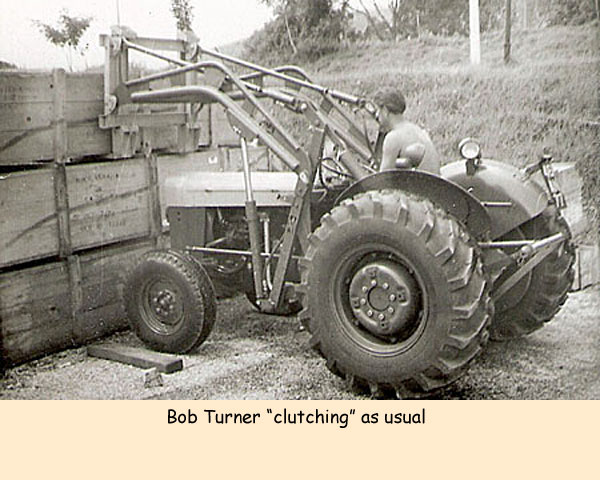
So the first few weeks were spent preparing a landrover and a rough terrain fork lift carrier and its trailer, so that we could move cargo from the top railhead to the site, and moving the odd bits and pieces, mainly underslung, on our Hueys. Next we started shovelling aggregate into the rail wagon. Did I mention that they only had one wagon??!
The move of building materials took up most of our time, together with a couple of Malay labourers, for a while, but as the different bits of hard standing were completed on site, so we could look to airlift bits of the TPS34 as and when it arrived ex USA.. At this stage the Ops staffs decided that they could not wait for the radar to become operational and needed the FEAF based ‘mobile’ type UPS1 in place in the interim.
The move of building materials took up most of our time, together with a couple of Malay labourers, for a while, but as the different bits of hard standing were completed on site, so we could look to airlift bits of the TPS34 as and when it arrived ex USA.. At this stage the Ops staffs decided that they could not wait for the radar to become operational and needed the FEAF based ‘mobile’ type UPS1 in place in the interim.
The radar was in Singapore and was not airportable which dictated that either it came up self- mobile by road, or it was loaded onto a train, reducing the road movement from the nearest station to about 5 miles instead of 450! A total of twenty two trucks between 3 and 10 tons were involved. We returned to Singapore and loaded the vehicles on to a train at Keppel station yard and the train travelled slowly back up to Butterworth station yard, where we were waiting to offload it. Turner wanted to clutch all the largest and heaviest trucks and was anxious to board the ferry with a view to it sinking I think! We each moved trucks for several days, finally assembling them on an old parade ground which we were going to use for load prep.
Now the really hot work started and we were wearing only KD shorts and desert boots. Additionally, we got very good support from the support platoon of the RGJ who provided manpower when we most needed it. Minden Barracks was the base of the 3rd battalion of the KRRC, the Green Jackets, and was commanded at that time by Lt Col Edwin Bramall, who was later to rise to full Field Marshal rank and become CGS and then CDS with a Peerage on retirement! Anyway, he was unhappy with our mode of dress and despatched his Adjutant to tell me that he did not expect men, especially Officers, to appear on his parade ground in a semi naked state and would I please get everyone properly dressed. The temperature was over 100F in the sun, so I sent his adjutant back with a polite message that we were not under his command at that time and that when we were, I would send him a postcard to that effect. Over the following 10 months or so, he did not speak to me again, but I like to think that the successful outcome of Hillclimb had something to do with his subsequent elevation!
We had to get a 66 Sqn Belvedere for a couple of weeks to complete this phase of the task and it duly arrived, about 2 weeks late if I remember correctly. The lifts were very dicey because no load plans existed for any underslung loads by Belvedere!! We made them up as we went along and had no major catastrophes, although we did have to jettison one load in the sea. This was a 22 foot long girder which was very difficult to sling, but its replacement went up safely.
The aircraft captain was one Flt Lt Bill Russell, a gifted pilot and the most experienced Belvedere jock in the RAF. Without his expertise and pragmatic approach, we could never have done it. The radar was up and running ahead of time and all this while, Bill Holder tractor movements continued to move loads up via the railway and the MPBW builders, mainly Chinese women, carried on humping... well, you know what I meant!
The aircraft captain was one Flt Lt Bill Russell, a gifted pilot and the most experienced Belvedere jock in the RAF. Without his expertise and pragmatic approach, we could never have done it. The radar was up and running ahead of time and all this while, Bill Holder tractor movements continued to move loads up via the railway and the MPBW builders, mainly Chinese women, carried on humping... well, you know what I meant!
After a break in Singapore, back at base, we returned to receive the new and shiny TPS34 which had arrived at Butterworth by chartered DC6. Each of the different modules was assembled on a skip, to which one could attach wheel sets to move the skips around. We only had a couple of wheel sets so were somewhat limited and the skips had no brakes. Moving them around on site was an exciting time for all. If they were not bottoming out on the hilly terrain they were sliding down towards the newly constructed sewerage farm, with Bill Holder or Derek Smith screaming to everyone to get out of the way. The rough terrain fork lift brakes were really never designed to hold a trailer weighing up to 30cwt on a one in five hill!
Nevertheless, we prevailed and after what seemed only a few weeks but was in fact nearly a year, the new CO of RAF Western Hill, as the new station was named, arrived and made his presence felt by giving orders to FEAFMAMS personnel who were less than happy. We sorted that out and he had the grace to apologise and say that he had misunderstood our role.
Nevertheless, we prevailed and after what seemed only a few weeks but was in fact nearly a year, the new CO of RAF Western Hill, as the new station was named, arrived and made his presence felt by giving orders to FEAFMAMS personnel who were less than happy. We sorted that out and he had the grace to apologise and say that he had misunderstood our role.
And so we came to the official opening: I think it was a bigwig from HQFE - an admiral perhaps? - and we were not invited! Nuff said. We did have the honour of being offered the first glass of water from the on-site production facility. For some reason none of the lads was keen when they found out that it was recycled sewage from the site, but after the chief sewage engineer had a glass, yours truly obliged everyone by trying it. Apart from Turner, Devlin, Holder, McCullough and Smith reminding me that the toilets catered for all ranks plus the coolies and waiting hopefully to see me fall over, it tasted fine.
We all returned to Seletar and have gone our separate ways, but some of us have never lost touch. It may not have been the most exciting or dangerous of tasks but I defy anyone to find one as unusual or as magnificently concluded. But then you wouldn’t expect anything else from FEAFMAMS!!
We all returned to Seletar and have gone our separate ways, but some of us have never lost touch. It may not have been the most exciting or dangerous of tasks but I defy anyone to find one as unusual or as magnificently concluded. But then you wouldn’t expect anything else from FEAFMAMS!!




